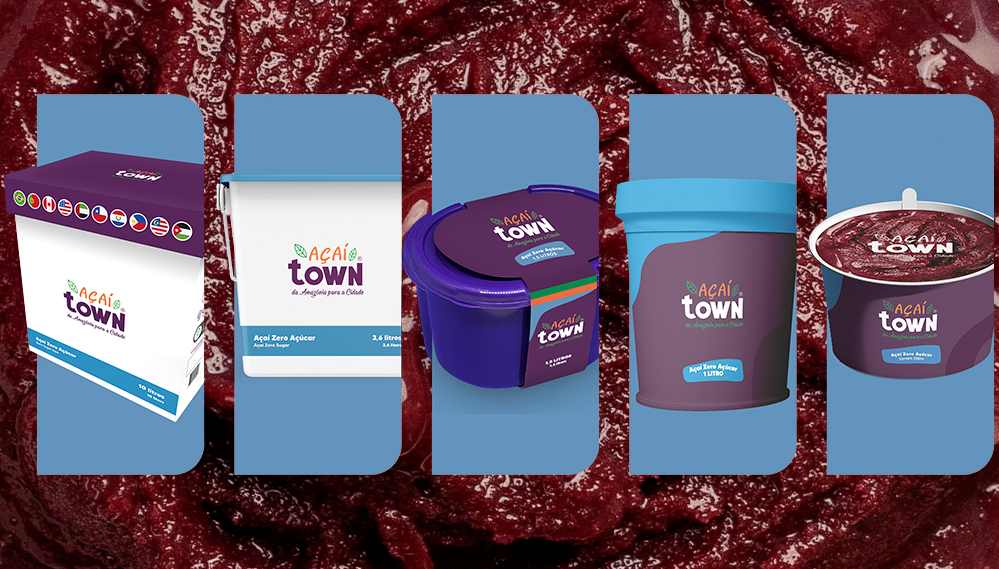Here at Açaí Town, in addition to our traditional açaí, we also offer a zero sugar version! Made especially for those looking for a more balanced lifestyle, without added sugar, but still full of flavor.
But there’s a question we hear a lot: Is açaí zero actually fitness? The answer isn’t as simple as it seems. Many people associate the word “zero” with a light or weight-loss-friendly food, but even without sugar, açaí is still naturally high in calories and energy.
“Zero sugar” doesn’t mean “low calorie”
Many assume that açaí zero is low in calories just because it contains no added sugar, but that’s not entirely true. Açaí zero doesn’t have refined sugar or guaraná syrup, which is great for those trying to avoid sugar spikes or reduce overall sugar intake. However, pure açaí is still a calorie-dense fruit, and here’s why: it’s rich in healthy fats, especially omega-6 and omega-9. These fats benefit heart, brain, and skin health, but they’re still a source of energy, and therefore, calories. So even without added sugar, açaí remains a nutritionally and energetically dense food.
It depends on the toppings
Choosing açaí zero can be a step toward healthier eating, especially for those avoiding sugar. But the final nutritional value of your açaí bowl depends heavily on the toppings.
Sometimes people choose the zero version thinking it’s a “fitness” option, but then add high-calorie toppings like:
- Sweetened condensed milk
- Peanut candy (paçoca)
- Granola with refined sugar
- Chocolate or hazelnut spreads
- Large amounts of powdered milk
- Candy, sprinkles, and other sugary extras
These ingredients, though delicious, can easily make your bowl exceed 1000 calories, which contradicts the idea of a balanced, lighter meal.
To keep it healthy, go for natural and lighter toppings like:
- Fresh fruit
- Unsweetened granola
- Seeds like chia, flaxseed, or oats
- A drizzle of honey instead of condensed milk
- Açaí is energizing, not a “weight-loss” food
Another common misconception is that açaí, because it’s natural and rich in antioxidants, promotes weight loss. But what makes a food appropriate for weight loss isn’t just its ingredients, it’s how, when, and how much of it you eat.
Açaí is naturally high in fats and carbs, making it an excellent source of energy, ideal for pre- or post-workout. But that doesn’t mean it helps with weight loss or fits every low-calorie diet.
In short: açaí is healthy, but caloric. It can definitely be part of a balanced diet, even a weight-loss plan, as long as it’s consumed in moderation with the right toppings.
“Fitness” is a relative concept
The word fitness is widely used in the healthy eating world, but its meaning varies from person to person. What’s considered fitness for one may not be for another. It depends on personal goals, nutritional needs, activity levels, and health conditions.
- Açaí zero, for example, may be a great option for:
- Those who want to reduce or avoid refined sugar
- People with diabetes or dietary restrictions
- Anyone looking for a natural energy source
For these groups, it can be considered a healthy and functional alternative.
However, that doesn’t mean every açaí zero bowl is light, diet-friendly, or intended for weight loss.
Other factors, like portion size, toppings, and frequency, also make a big difference. A large açaí zero bowl loaded with high-calorie toppings can have just as many (or more) calories as a regular sweetened one.
So… is açaí zero fitness or not?
Açaí zero is definitely a healthier alternative to heavily sweetened versions, especially for those watching their sugar intake. But it shouldn’t automatically be labeled as “fitness food” or a weight-loss solution.
It all depends on how you consume it, from your topping choices to the portion size. When enjoyed in a balanced way, açaí zero can absolutely be part of a healthy lifestyle.
Remember: health is about balance. Whether something is “fit” or not depends on the context, not just the label.

